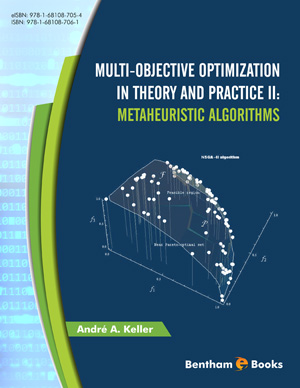Abstract
Multi-objective optimization (MOO) problems belong to programming approaches in which the decision-maker is faced with a multiplicity of conflicting objectives. This situation occurs with real-world problems involving engineering design, chemical processes, financial management, etc. In such problems, we will obtain rather a set of equally good solutions and not just one best solution. Classical methods for solving problems have shown their limits to find Pareto-optimality fronts. The difficulties were the necessity of repetitive applications, the requirement of some knowledge about the problem, the insufficient spread of non-dominated solutions, and the sensitivity of results to the shape of the Pareto-optimal front. accelerated development in the decades 1980s and 1990s. A variety of nature-inspired algorithms have been proposed in the recent years with extensive applications. The concept of dominance is the basis of the Pareto optimality. The dominance binary relation is a strict partial order relation. This approach allows a comparison between feasible solutions in the fitness space and decision space. The non-dominated solution sets yield Pareto fronts. Different techniques were proposed to find good approximations of the Pareto sets when a Pareto front cannot be determined analytically. Our method uses graph theory analysis. This approach provides a nondominated set by using the Hasse diagram of an acyclic graph. Numerous examples from the literature show connected and disconnected Pareto-optimal fronts. In particular, Pareto-optimal fronts change if we decide to maximize instead to minimize the objectives. Algorithms use different selection procedures. The selection criteria can be an elitist Pareto ordering, non-Pareto criteria like indicators, a bi-criteria evolution, and the extended concepts of dominance like ε-dominance and grid dominance.
Keywords: Attraction-based algorithm, Conflicting/nonconflicting objectives, Darwinian evolution, Engineering design problem, Globally/locally Paretooptimality, Hasse diagram, Master strategy, Metaheuristics, Multi-objective optimization, Nature-inspired algorithm, Near/exact Pareto-optimal front, Nondominated solution, Pareto-optimal solution, Pareto ranking, Population-based algorithm, Strongly/weakly Pareto-optimality, Subordinate heuristics, Swarm intelligence, Trajectory-based algorithm.






















